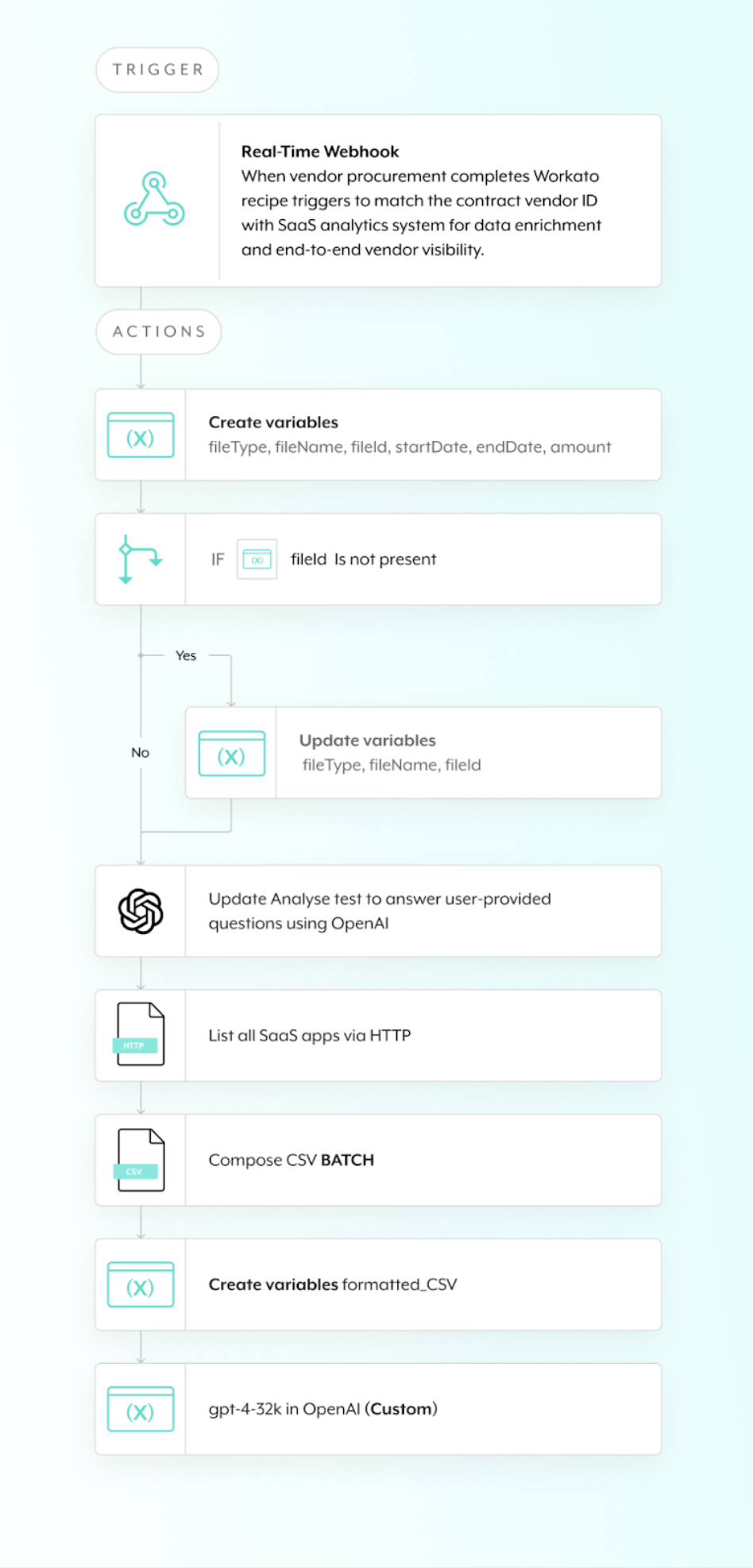At Workato, our customers are our north star. It’s easy to rally around our users because we work with some seriously impressive companies–big and small. Like Webflow, which was founded in 2013 and is a leader in the visual development platform market. Their solutions make it dead simple to design, build, and launch beautiful, responsive websites without writing a single line of code whether you are a 1-person powerhouse, an enterprise like The New York Times, or somewhere in between.
Recently, I sat down with Michael Bassani, IT Manager of Ops and Productivity, to learn more about an interesting use case . Like every company I’ve ever known, Webflow has a lot of tools in its arsenal. The modern company’s tech stack consists of hundreds of applications and systems. More tools means more vendors and costs to manage. Webflow proactively manages its spending on third-party applications with two independent systems that flag issues like when spending goes above what’s outlined in a contract and when licenses go unused.
Super cool, right? The only trouble was that these two systems were impactful in their own right and had no easy way to talk to each other. Michael was left with a fragmented process to piece together the data from each application, slowing down his ability to take advantage of the full picture insights. He realized that with Workato, he could quickly write a recipe to connect the tools and automate the work between them, plugging in OpenAI to fill one critical gap–unifying the vendor IDs across multiple systems. In this particular scenario, there were two important systems for vendor procurement (contract management) and Software as a Service (SaaS) analytics–both house essential data that is even more actionable for optimizing costs when used together. He devised an innovative solution for automating how these systems work together using Open AI to create a fuzzy match to streamline key variables and make sense of an inconsistent data set. Here is an abridged version of his recipe:

“This was such a unique and challenging use case because there was no easier way to match up the values in the 2 data sets. The contracts are created in one system, and we have our analytics in another. At the end of the day, this recipe I built is just one example of how we can get deeper oversight and insight into our spend. Now, I have enriched data about my contract value and how much each license costs. Honing in on these details gives us a real sense of the kind of fiduciary responsibility that we should all have.”
– Michael Bassani – IT Manager of Ops & Productivity
According to Michael, it would have required hundreds of lines of code to pull off an intelligent workflow like this if it weren’t for Workato. And this is just the start. He is preparing to launch some amazing workflows to automate the heavy lifting around vendor license management, such as informing employees when their lack of usage is flagged and taking the critical steps to de-provision the extra licenses for efficient SaaS cost optimization.
What could be more important for a high-growth company?

